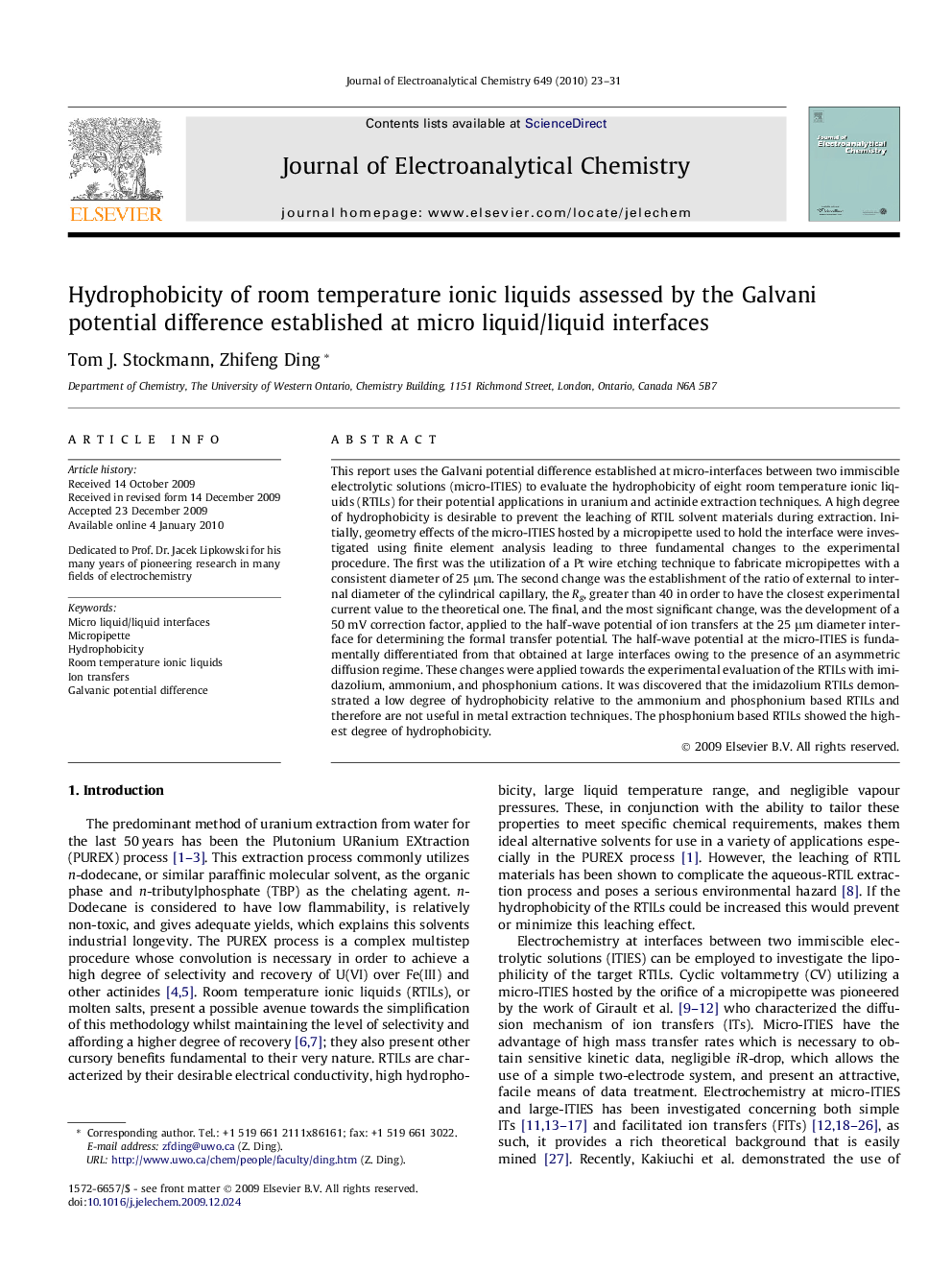| کد مقاله | کد نشریه | سال انتشار | مقاله انگلیسی | نسخه تمام متن |
|---|---|---|---|---|
| 219717 | 463294 | 2010 | 9 صفحه PDF | دانلود رایگان |

This report uses the Galvani potential difference established at micro-interfaces between two immiscible electrolytic solutions (micro-ITIES) to evaluate the hydrophobicity of eight room temperature ionic liquids (RTILs) for their potential applications in uranium and actinide extraction techniques. A high degree of hydrophobicity is desirable to prevent the leaching of RTIL solvent materials during extraction. Initially, geometry effects of the micro-ITIES hosted by a micropipette used to hold the interface were investigated using finite element analysis leading to three fundamental changes to the experimental procedure. The first was the utilization of a Pt wire etching technique to fabricate micropipettes with a consistent diameter of 25 μm. The second change was the establishment of the ratio of external to internal diameter of the cylindrical capillary, the Rg, greater than 40 in order to have the closest experimental current value to the theoretical one. The final, and the most significant change, was the development of a 50 mV correction factor, applied to the half-wave potential of ion transfers at the 25 μm diameter interface for determining the formal transfer potential. The half-wave potential at the micro-ITIES is fundamentally differentiated from that obtained at large interfaces owing to the presence of an asymmetric diffusion regime. These changes were applied towards the experimental evaluation of the RTILs with imidazolium, ammonium, and phosphonium cations. It was discovered that the imidazolium RTILs demonstrated a low degree of hydrophobicity relative to the ammonium and phosphonium based RTILs and therefore are not useful in metal extraction techniques. The phosphonium based RTILs showed the highest degree of hydrophobicity.
Journal: Journal of Electroanalytical Chemistry - Volume 649, Issues 1–2, 15 November 2010, Pages 23–31